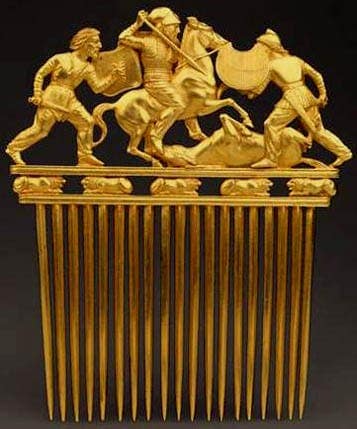Scythians are ancient people that lived in the steppes of Eurasia from approximately the 7th century BC until the 3rd century BC. They’re often portrayed as nomadic peoples who moved along as they traded and raided — but a new study challenges this notion. Using isotopic analysis, researchers have shown that, at least sometimes, the Scythians also settled down and practiced agriculture.

Scythians were excellent horse riders and carried out frequent raids on both European and Middle-Eastern civilizations, but also facilitated trade along the legendary Silk Road. For these reasons (and because they couldn’t prove otherwise), many archaeologists considered Scythians to be nomads. But in a new study led by Dr. Alicia R. Ventresca Miller, the evidence suggests otherwise.
“The Scythians are often imagined as nomadic warriors roaming the steppe, but our finds suggest that most people remained local to their settlements and only a few moved long distances,” Miller tells ZME Science.
Miller is a bioarchaeologist and stable isotope analyst at the University of Michigan. Her work focuses on populations in the steppe, focusing on nomadic cuisine and the rise of urban economies. Along with her colleagues, she measured isotopes of carbon, nitrogen, oxygen, and strontium in human teeth and bones from several Scythian-era burial sites in Ukraine.

Isotopes don’t just reflect what these populations ate, they also show where they were spending time geographically. Researchers found that at least some Scythians consumed a varied diet with numerous domesticated crops, and they didn’t seem to move all that much. To reach this conclusion, they particularly looked at strontium isotopes.
“Strontium isotopes are connected to variation in geologic substrates and soils. Plants growing in soils take up strontium, and then plants are eaten by livestock and humans – who then have the same strontium isotope values. Thus the “local” values of a specific place are determined by studying the underlying geology of a particular place. We then compare the strontium isotope values of humans and compare them to the local area,” Miller explains.
Results suggest that the Scythians weren’t a homogeneous bunch — they were diverse. Some were undoubtedly on the move, but most were sedentary. They raised cattle and millet and did more than just trade and plunder. The idea of large wandering Scythian populations, as romantic as it may be, just doesn’t seem true.
“Daily life among the Scythians was likely much like today – it included both urban and rural people, some were farmers, others livestock herders. There is also strong evidence for job specialization, thus there were people engaging in making detailed gold ornaments,” Miller concludes. “At urban sites, millet farming was an important part of the diet alongside livestock herding.”
The study has been published in PLOS ONE.






